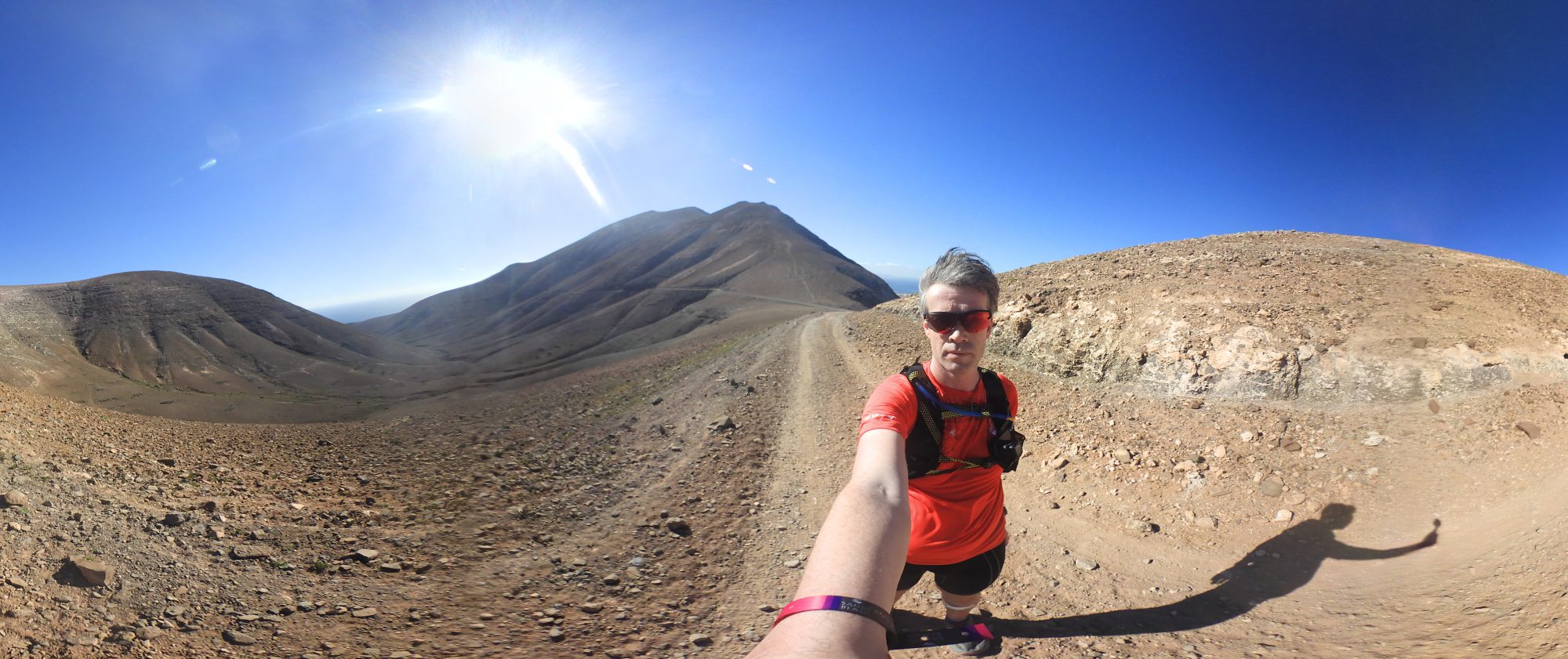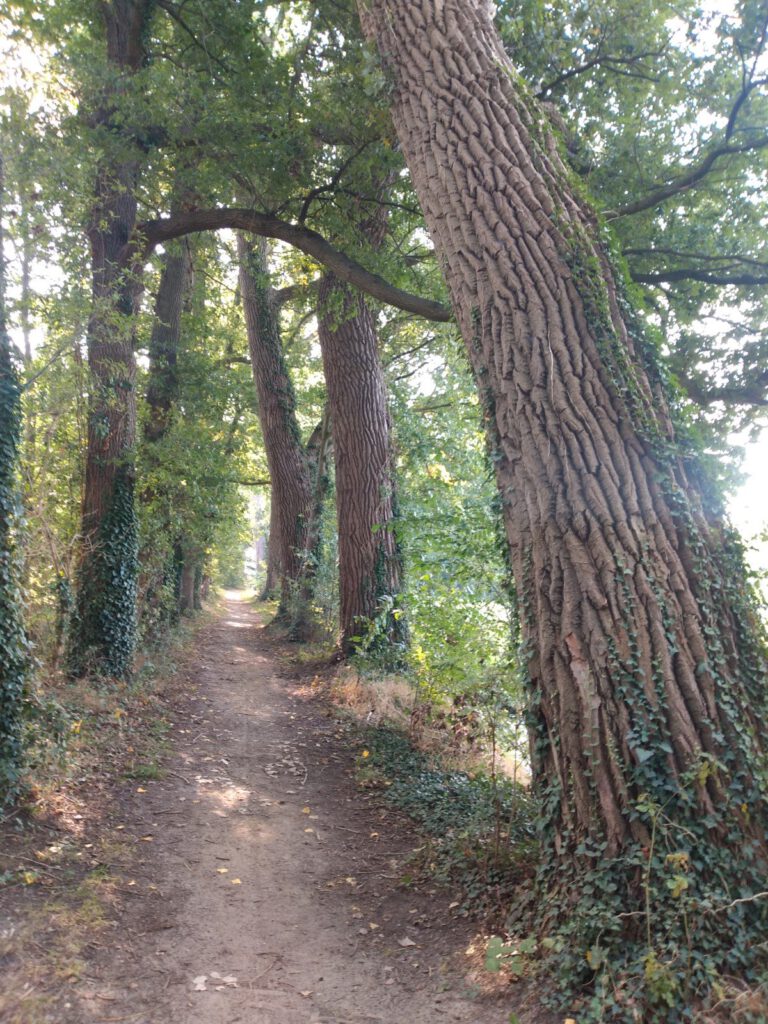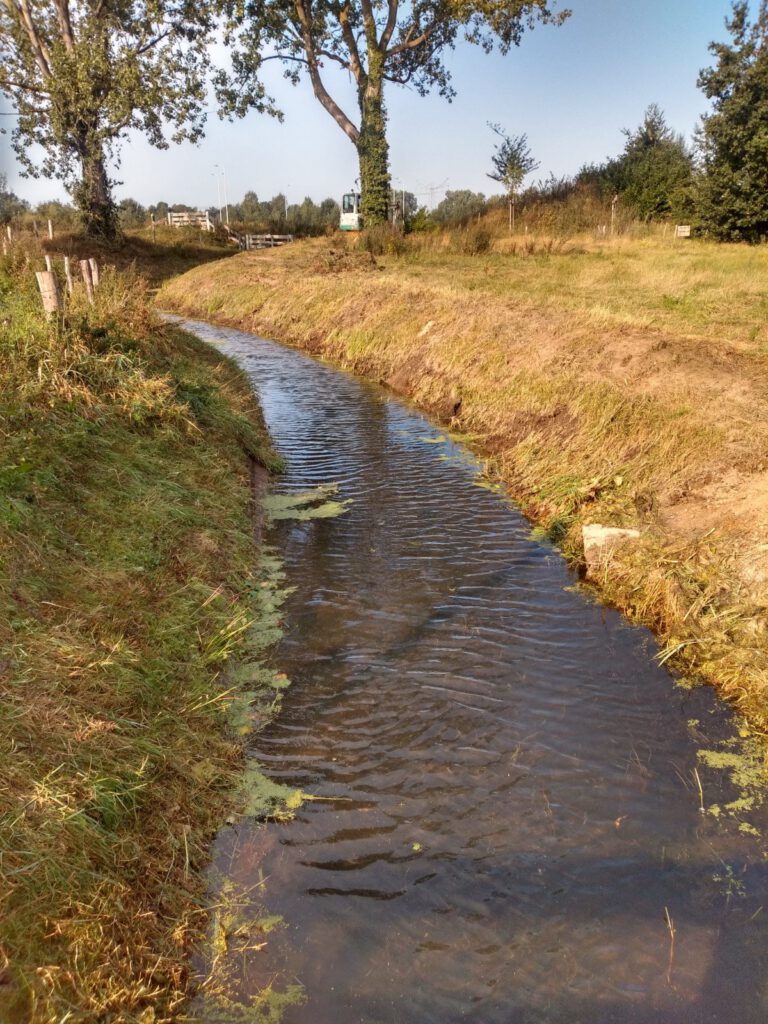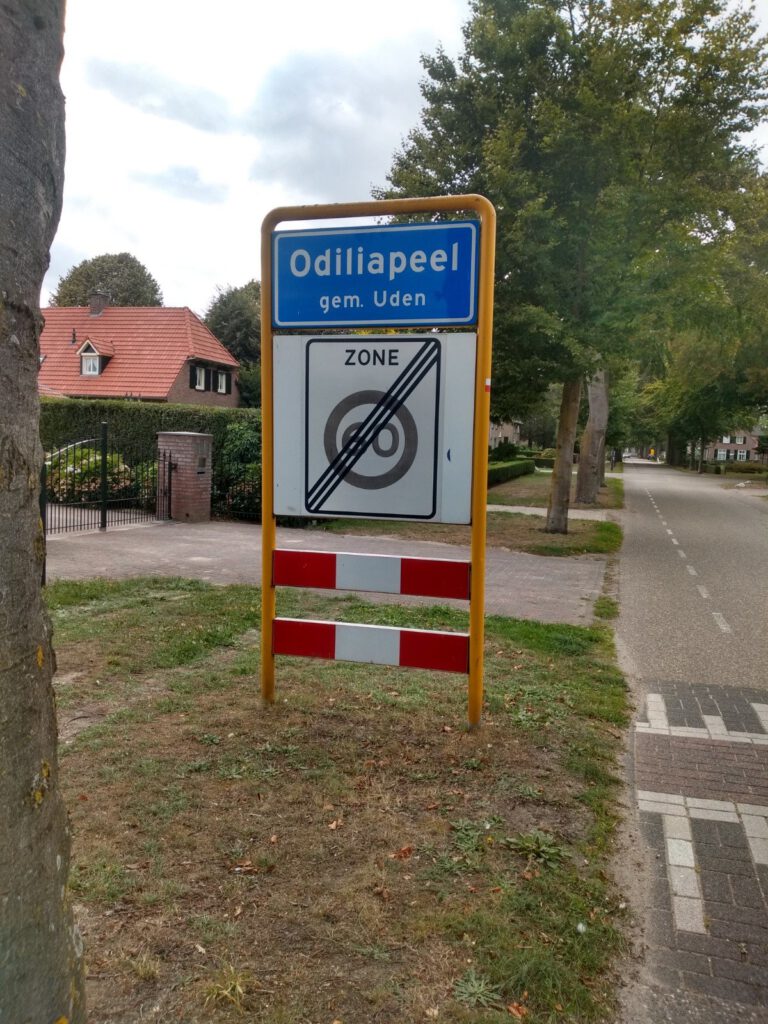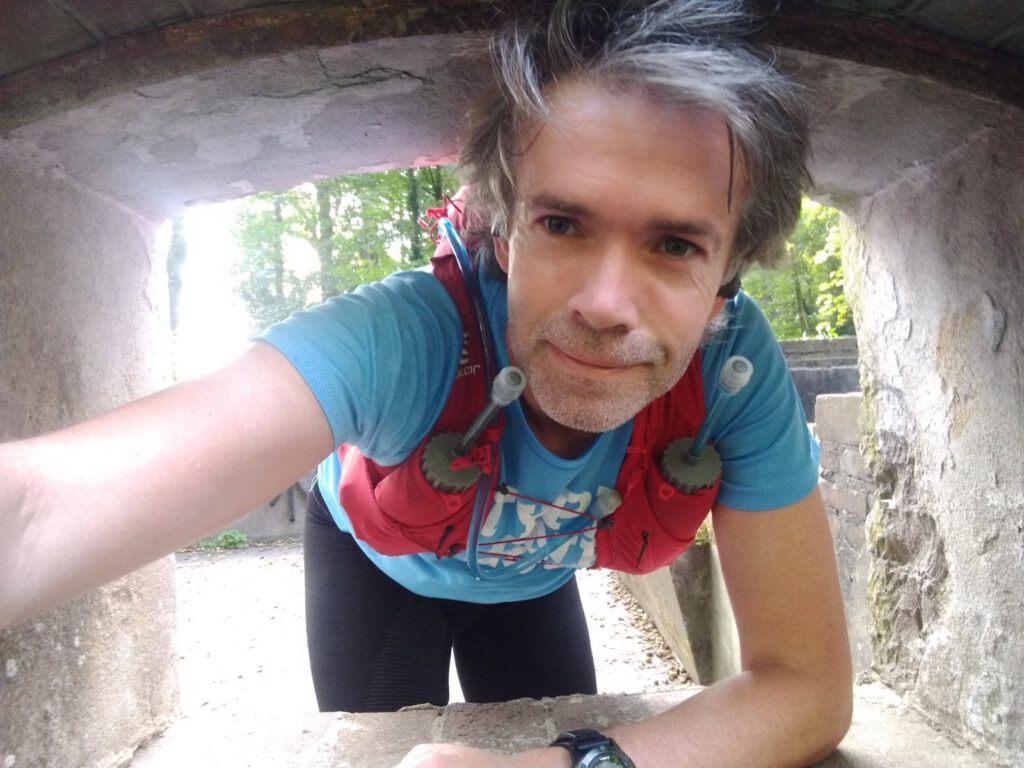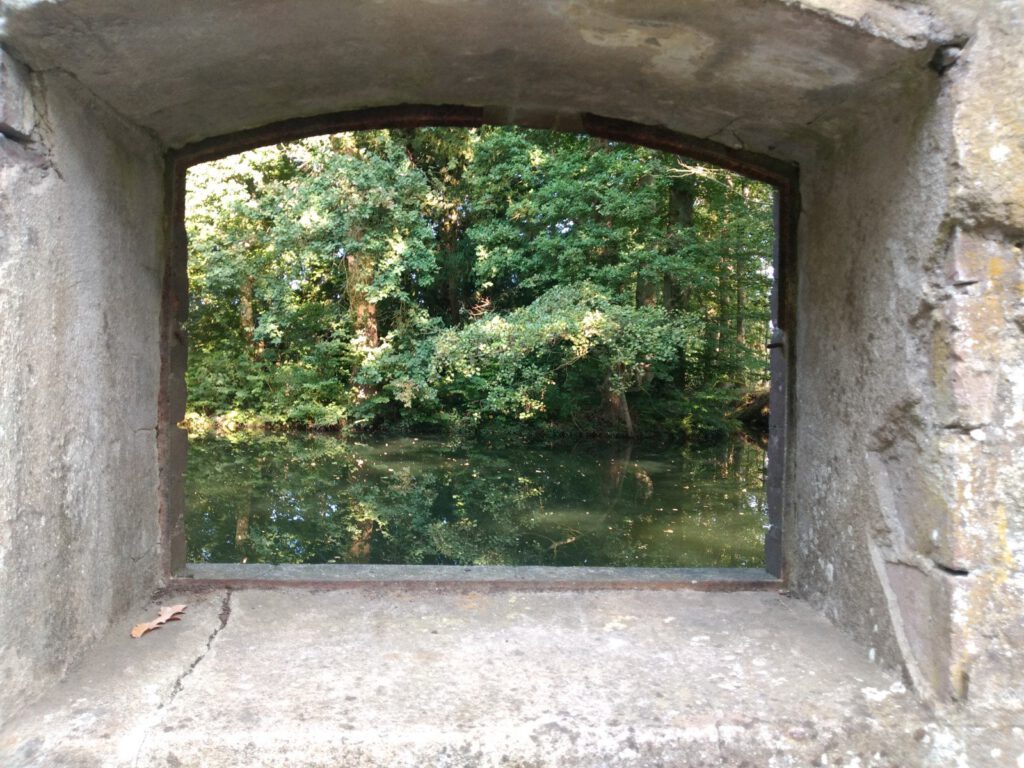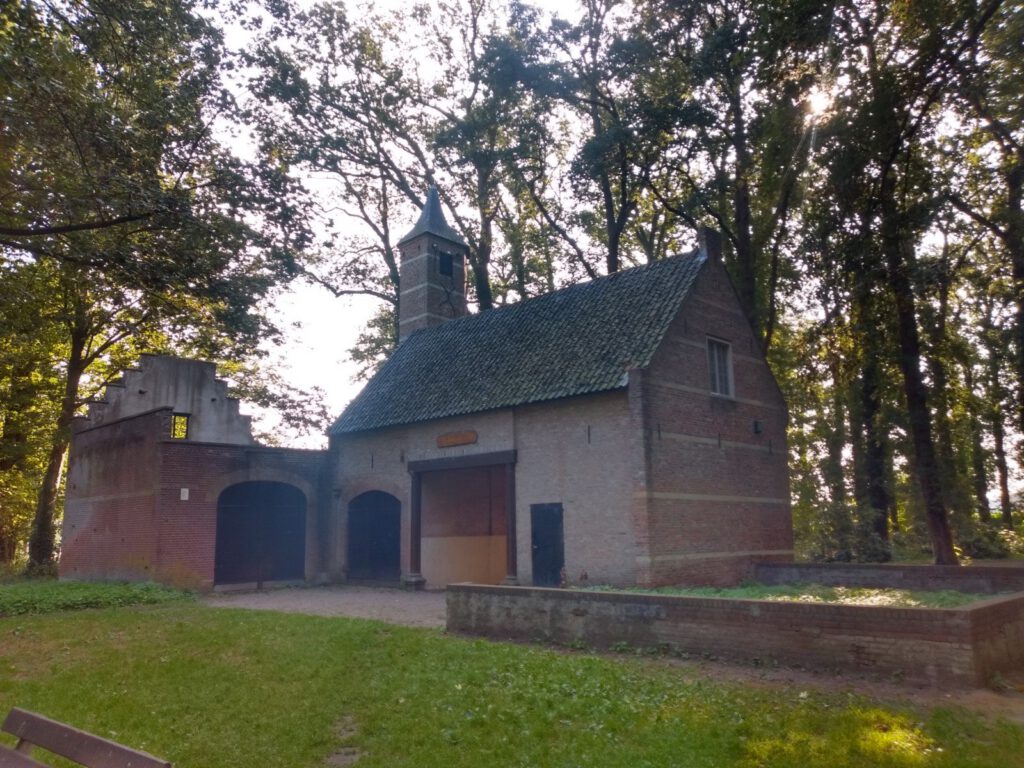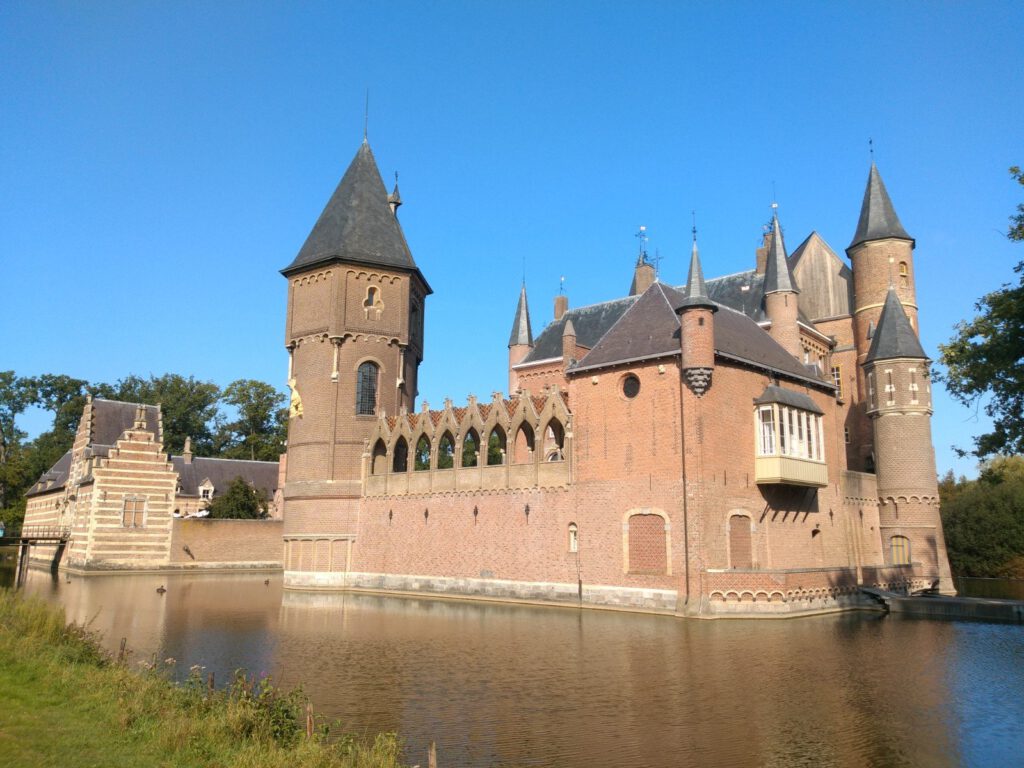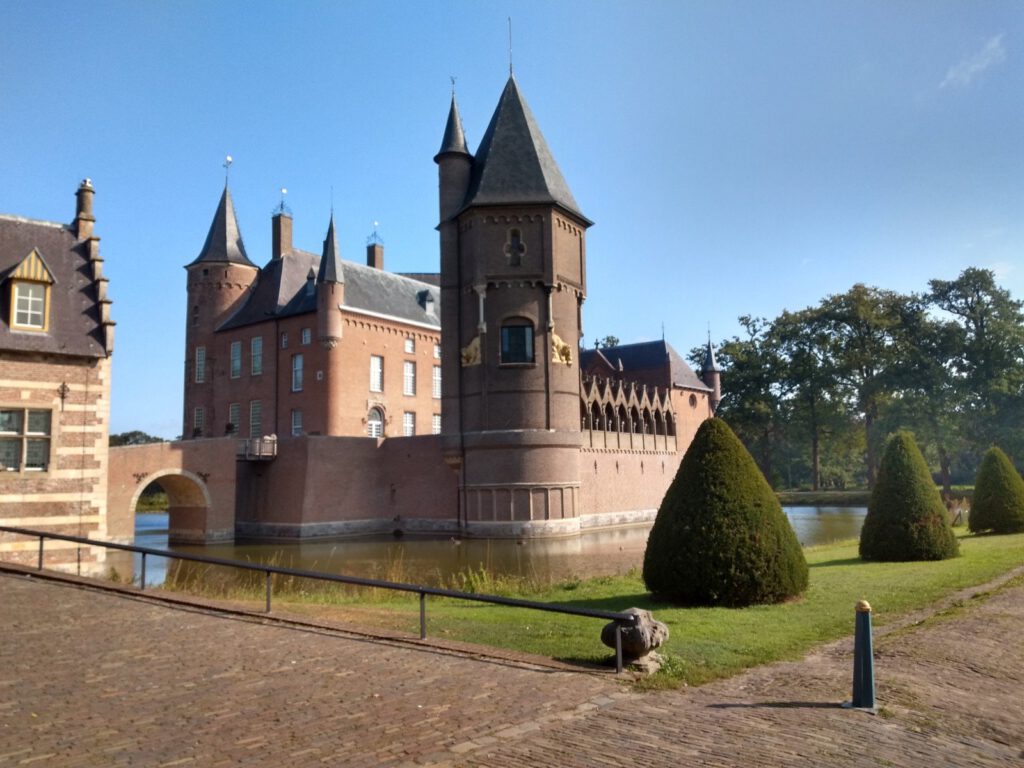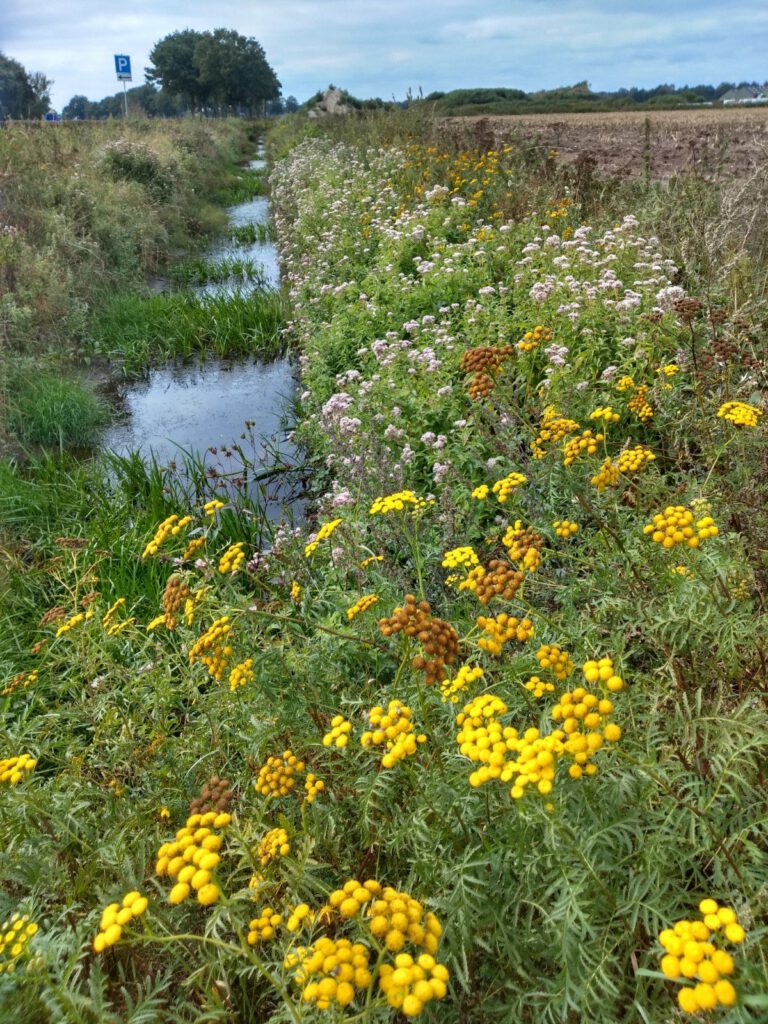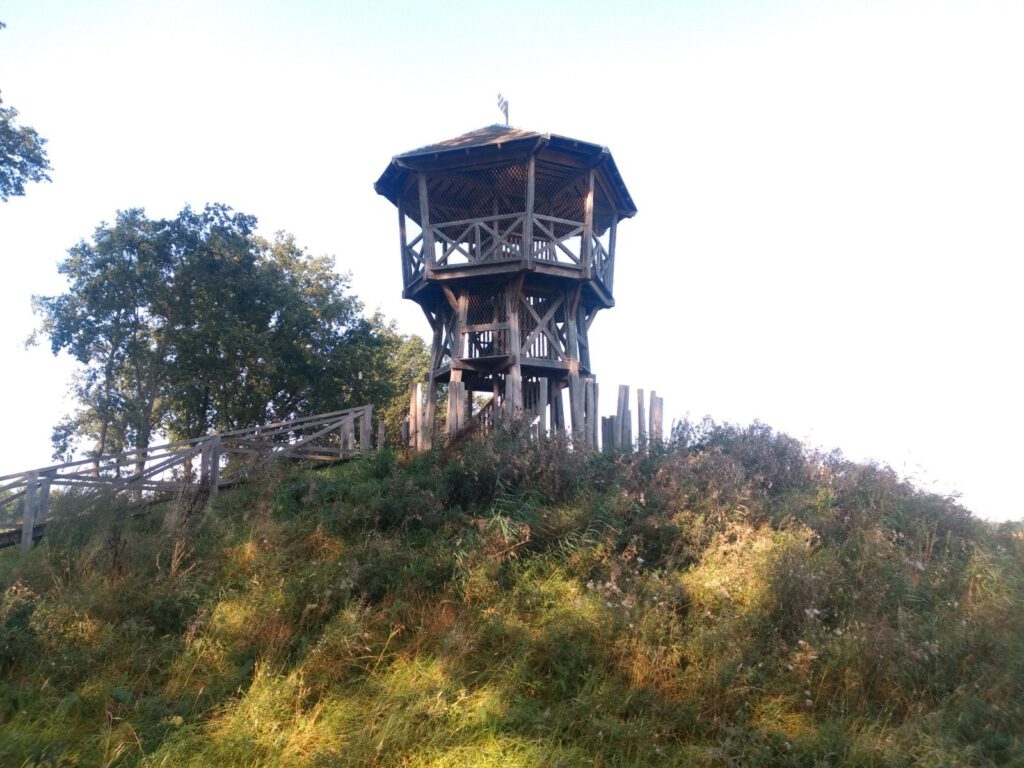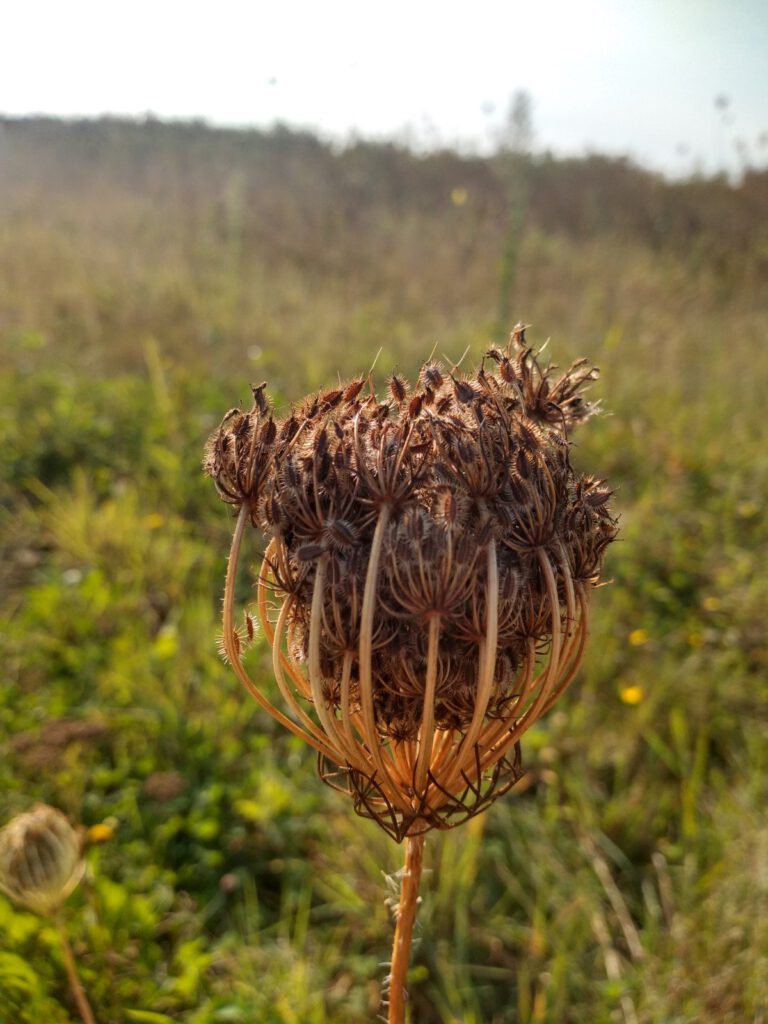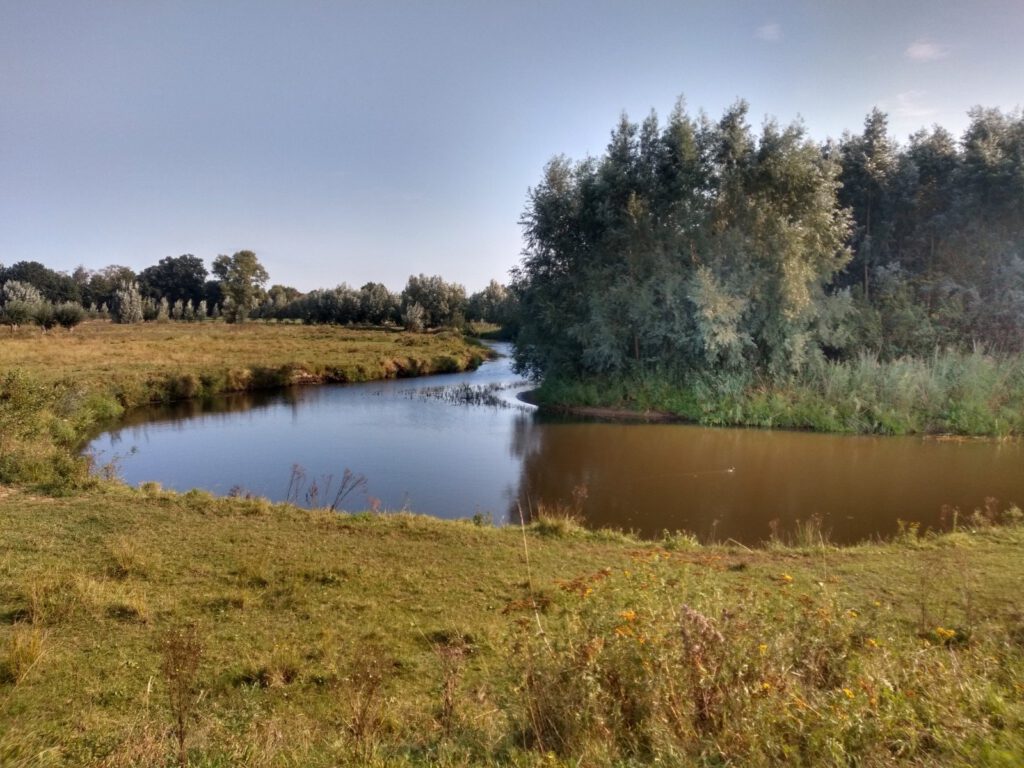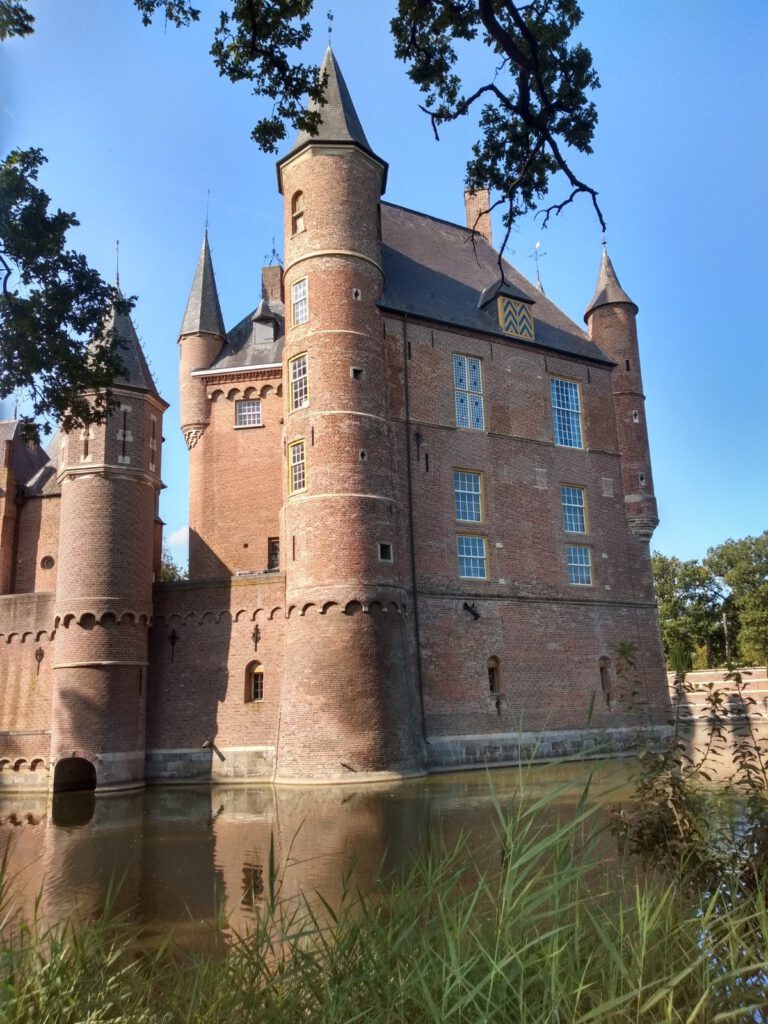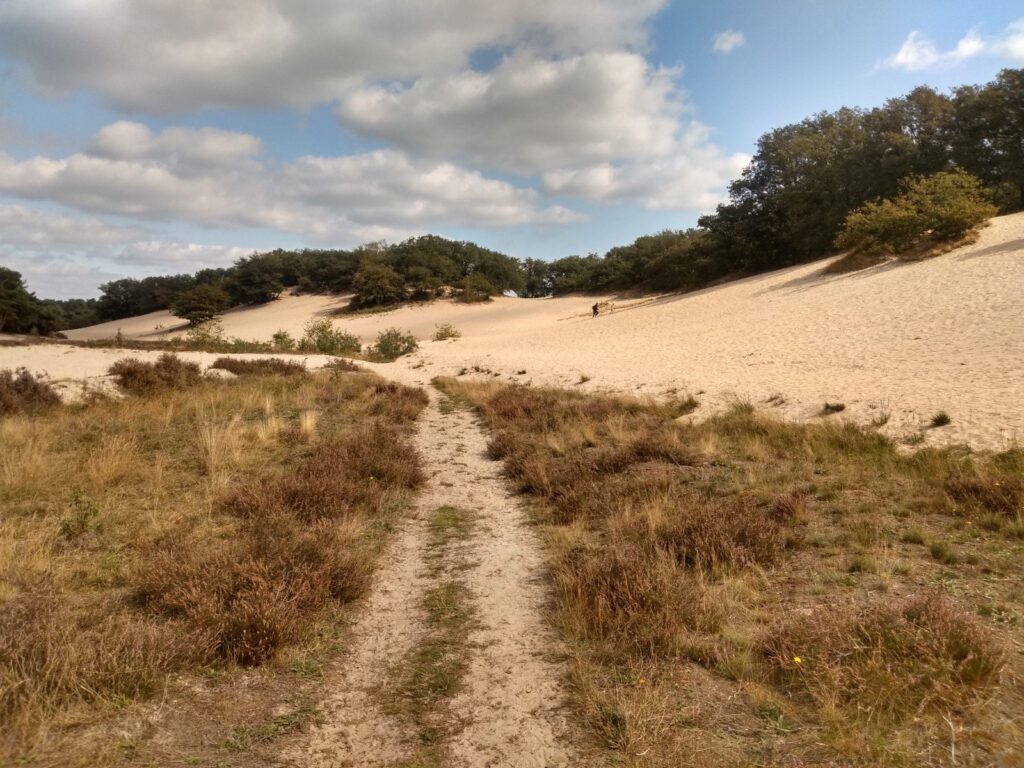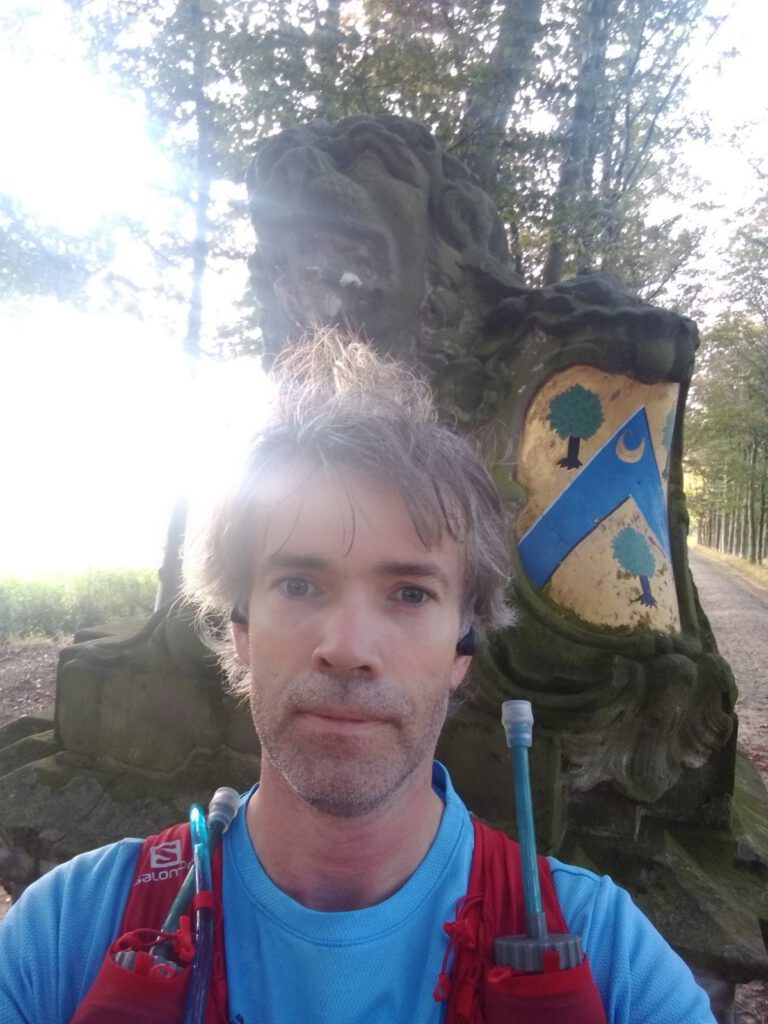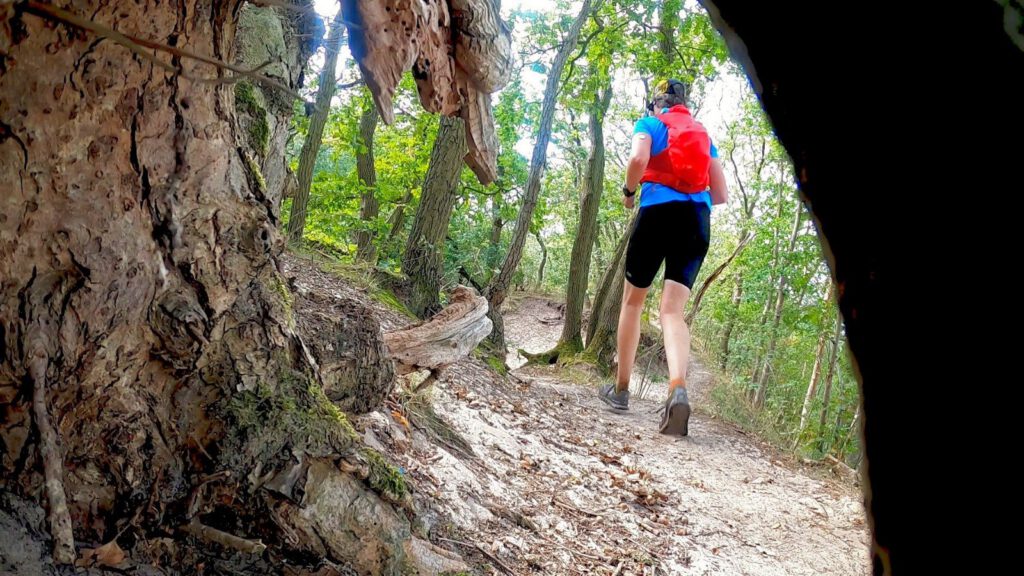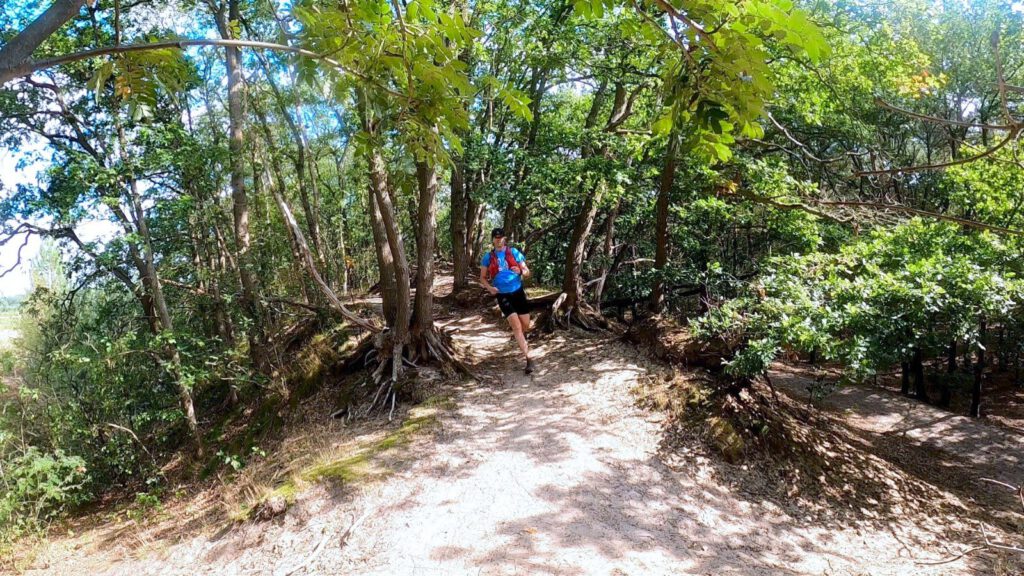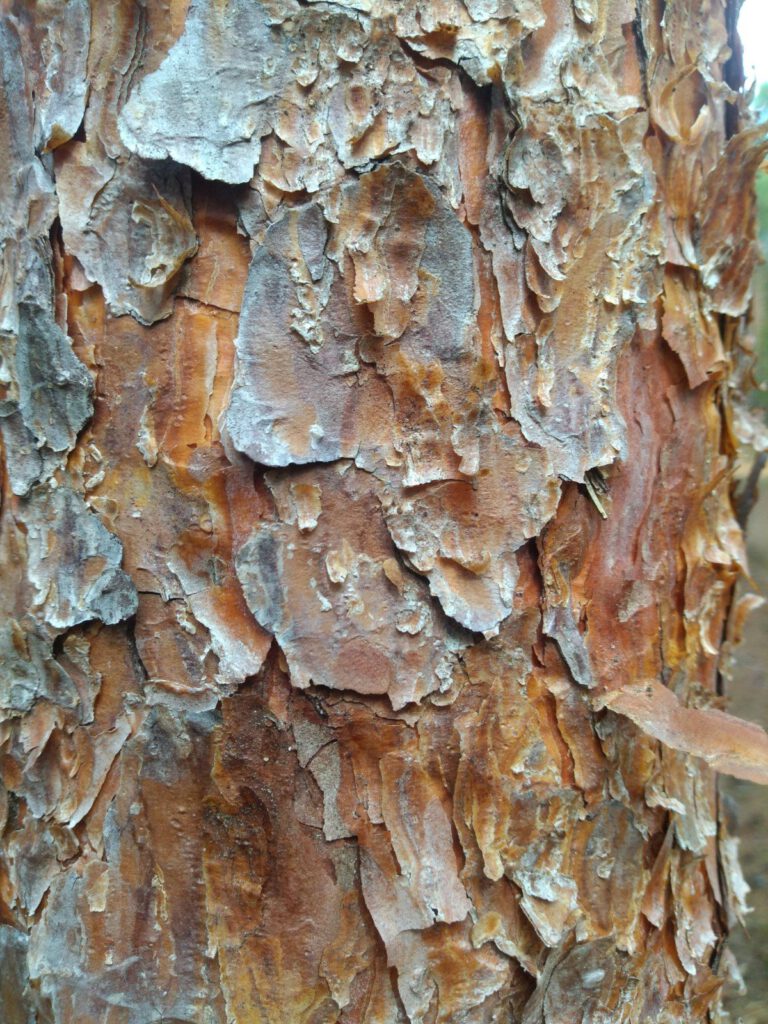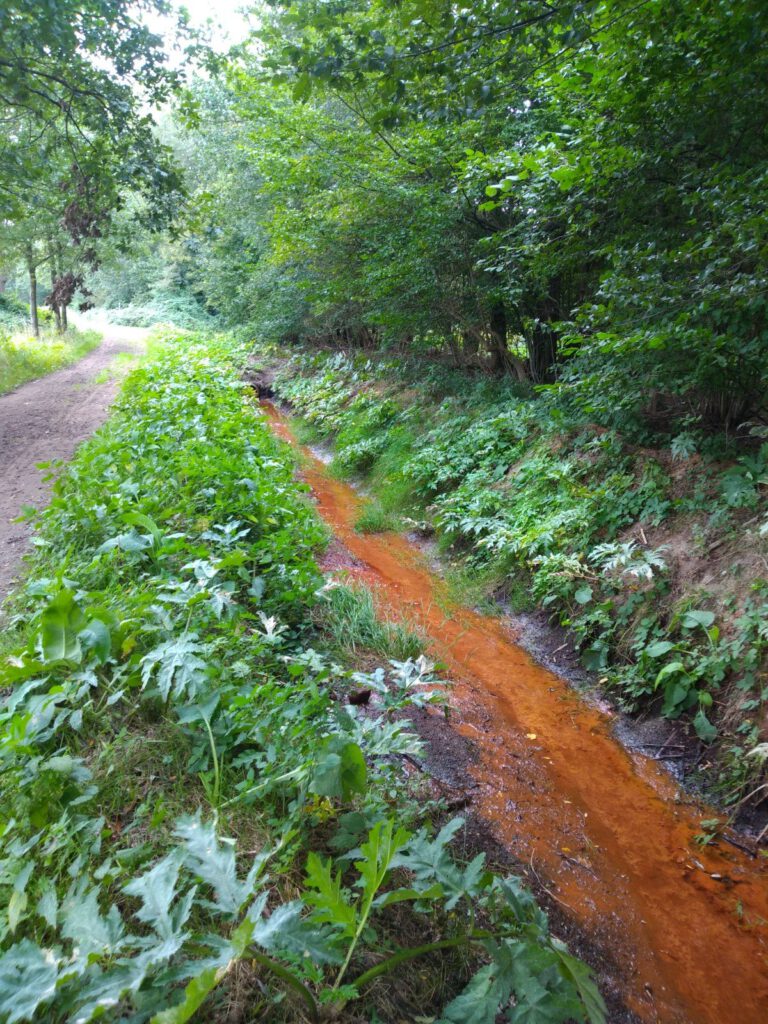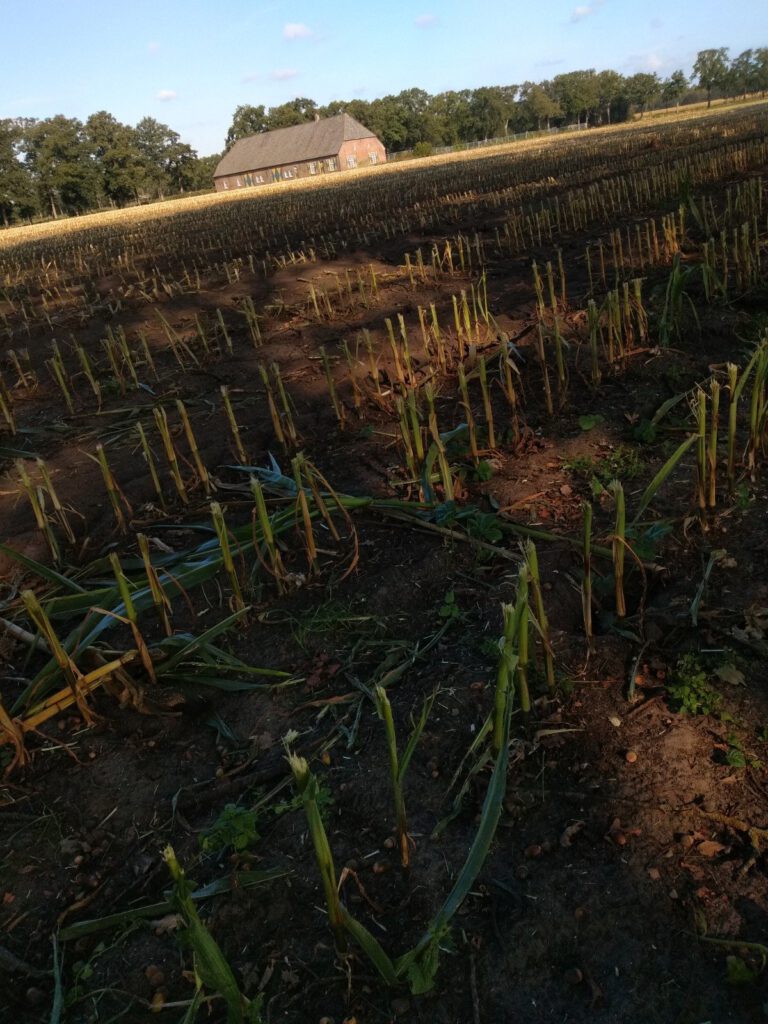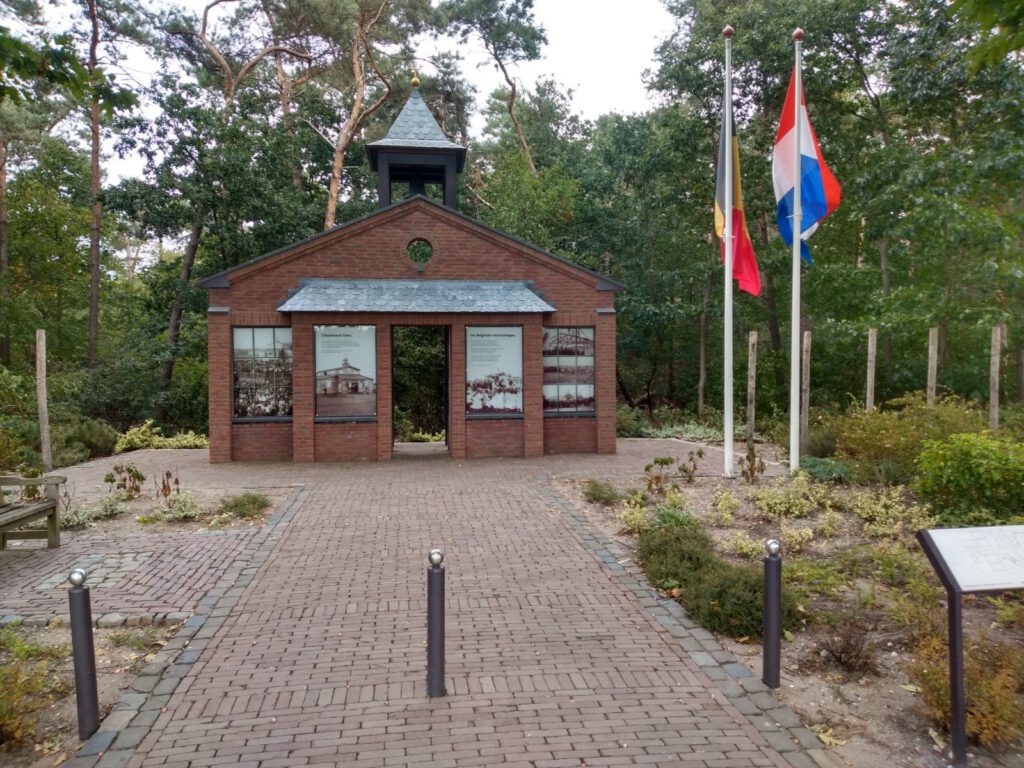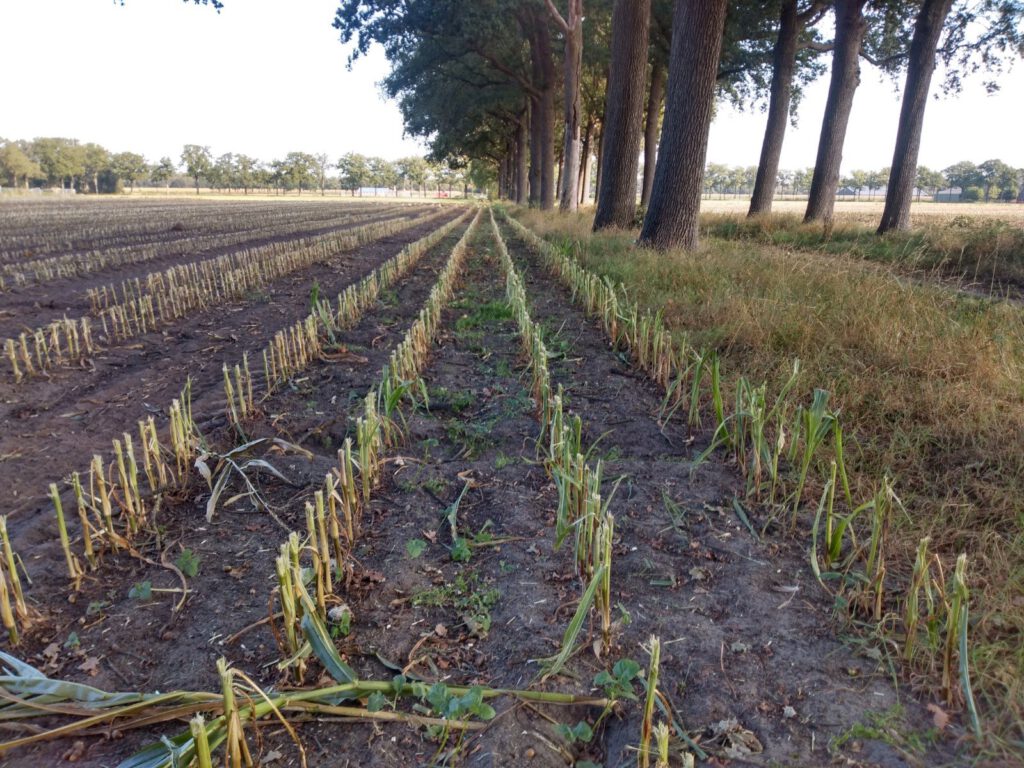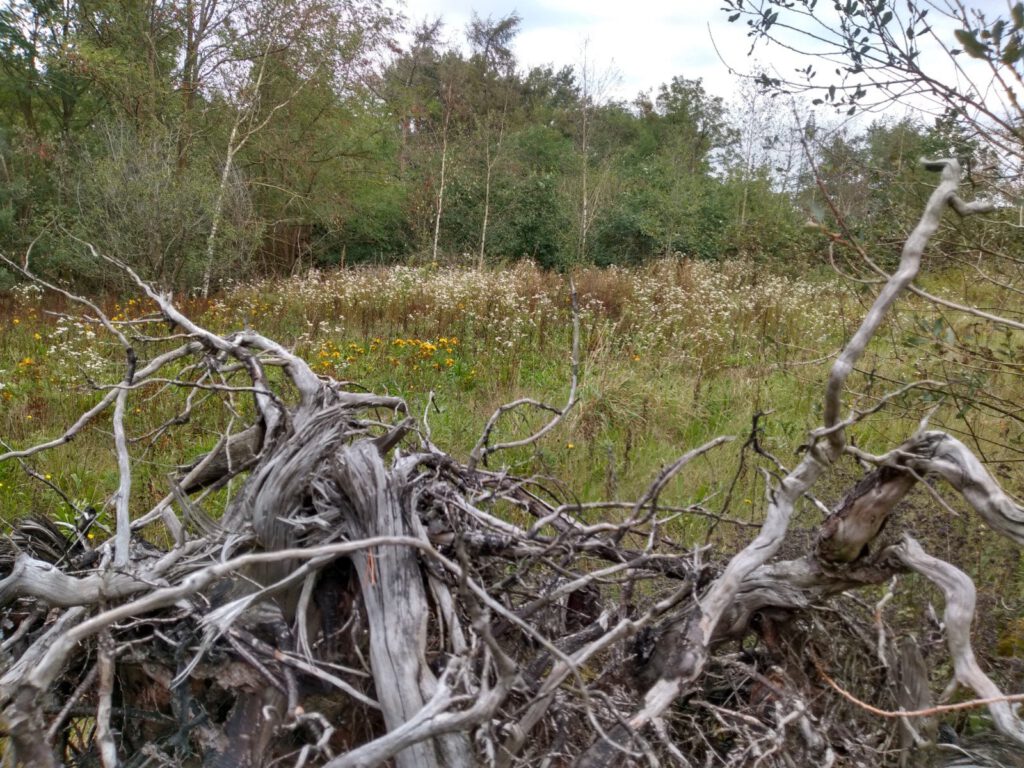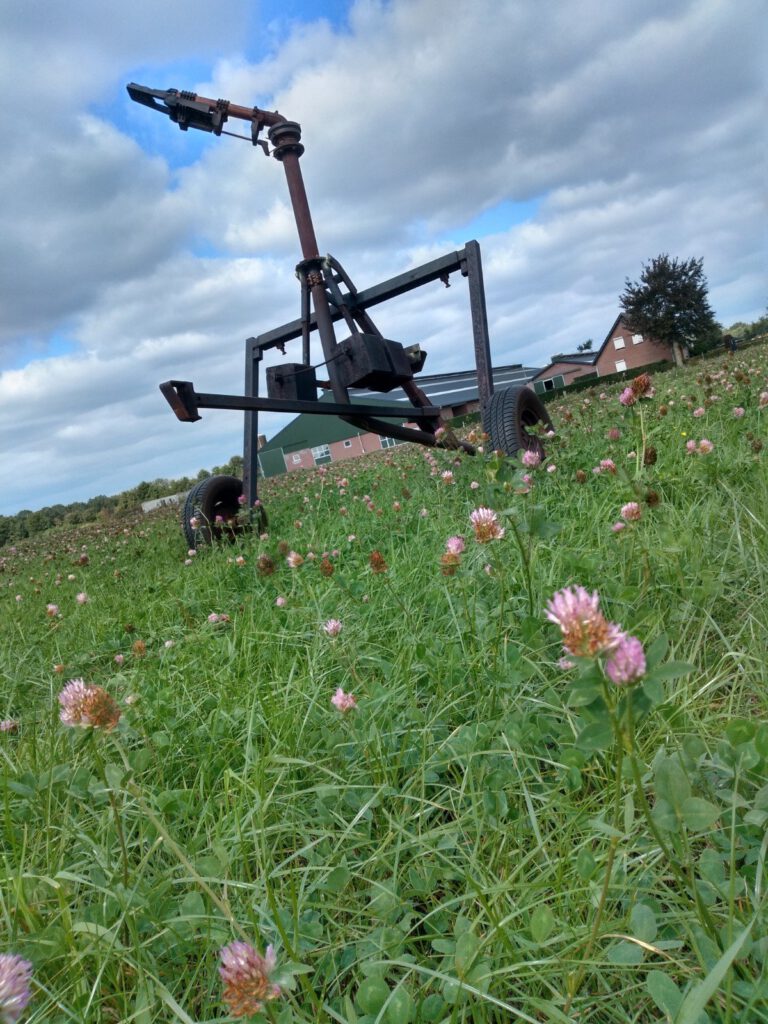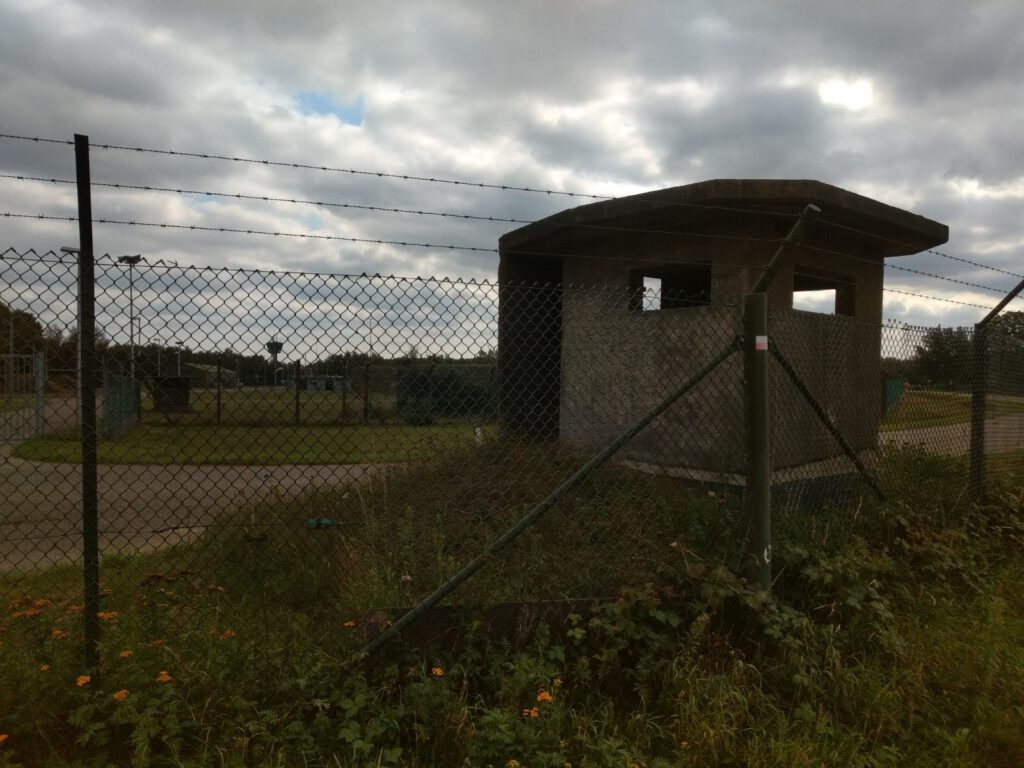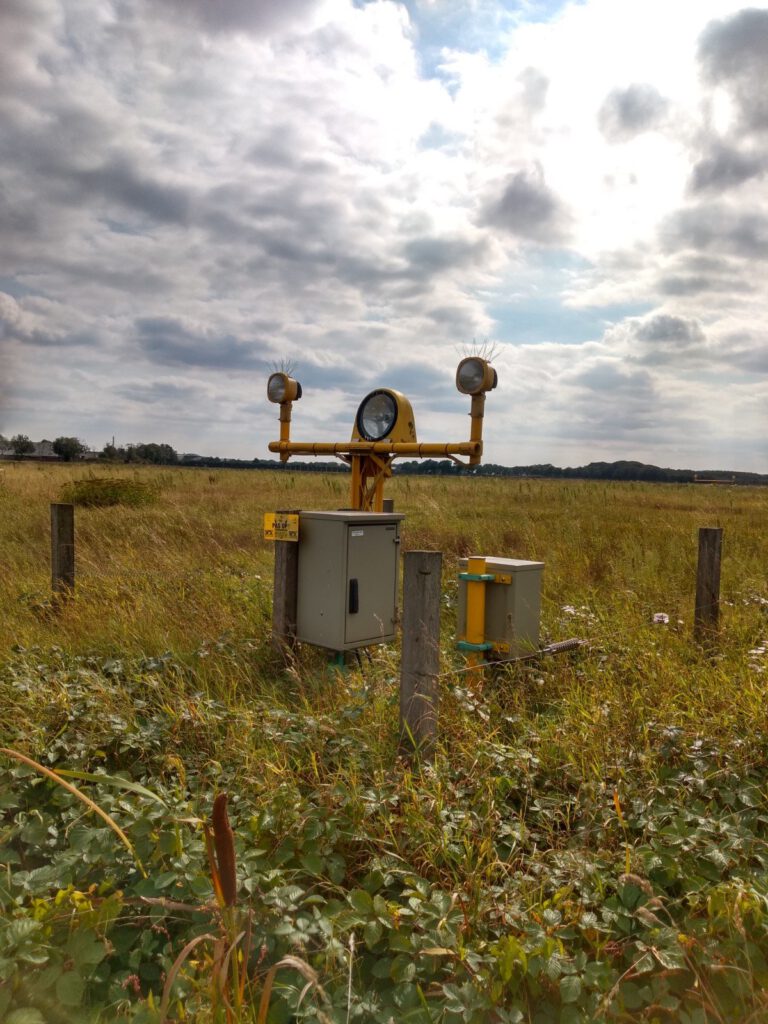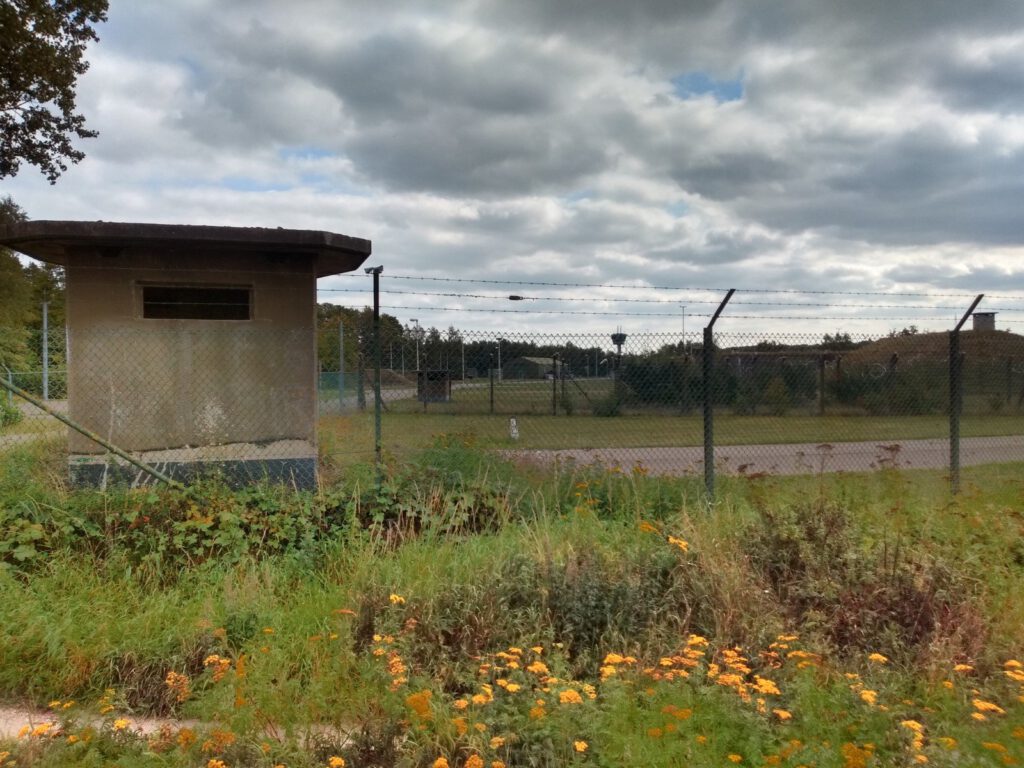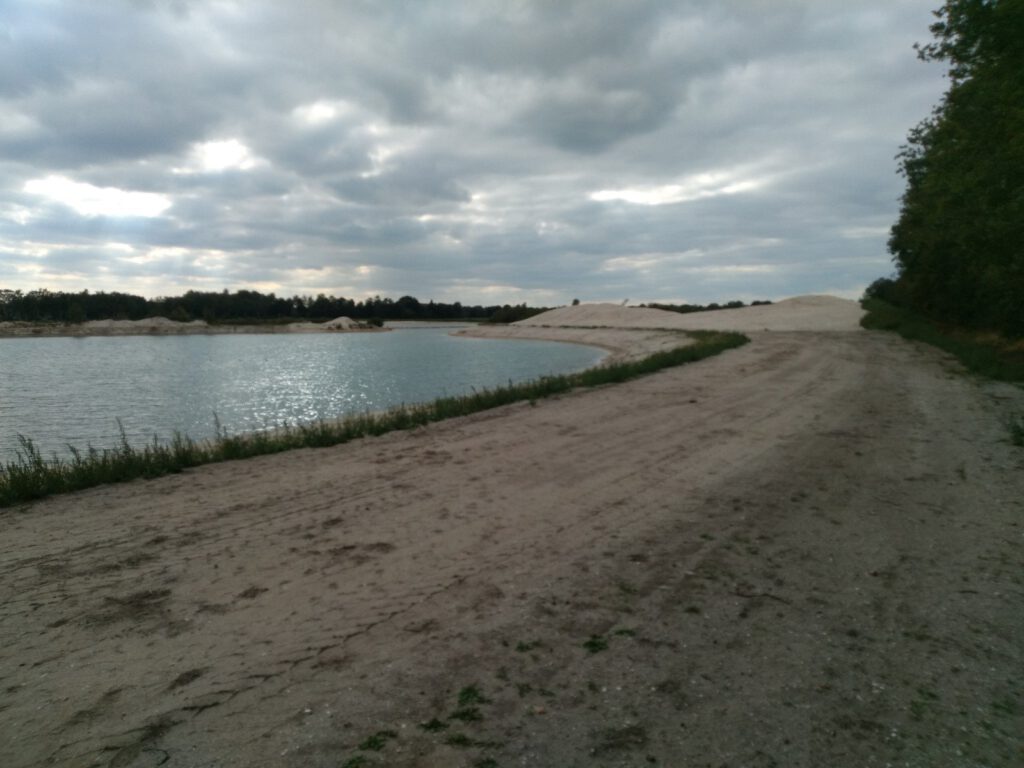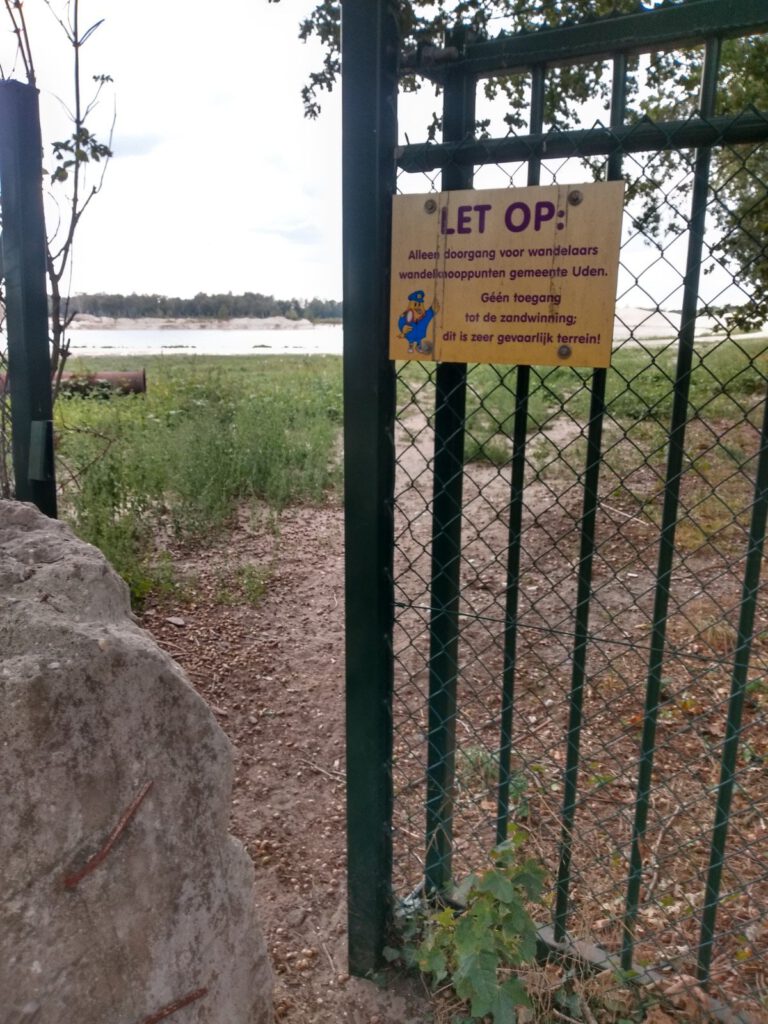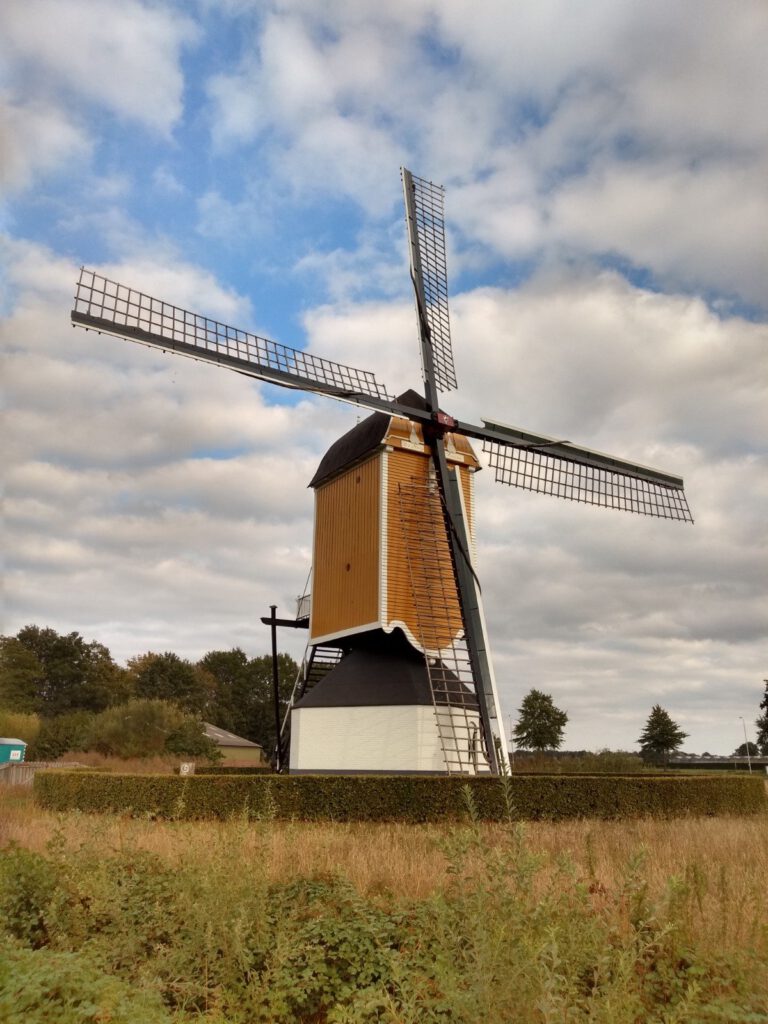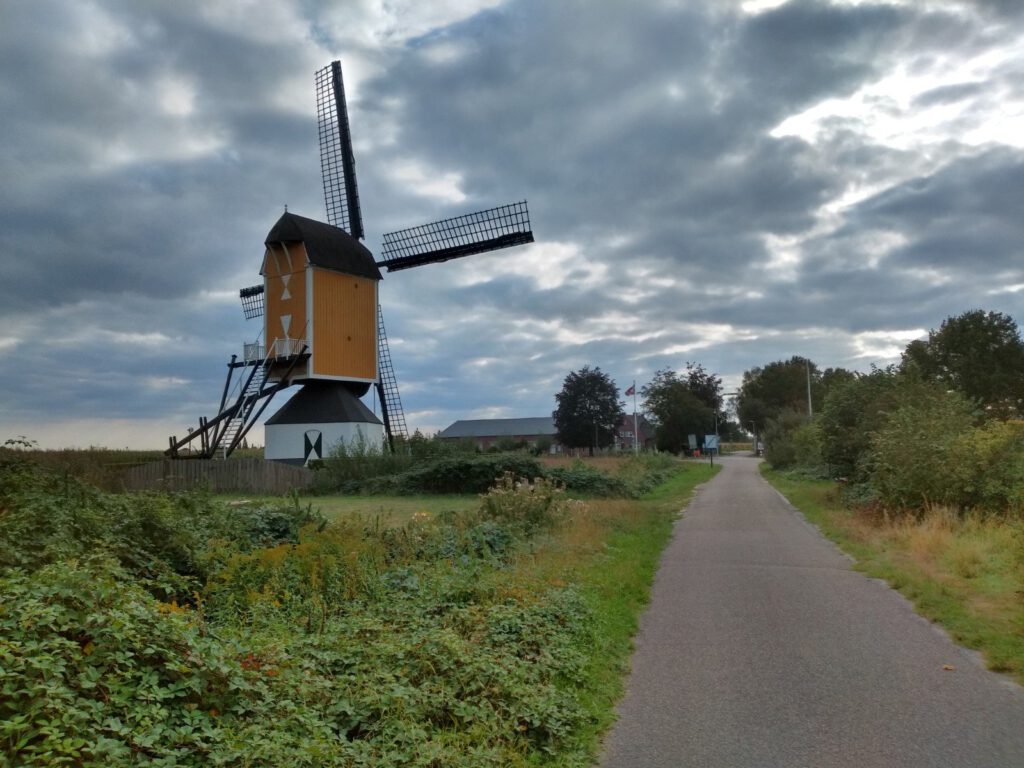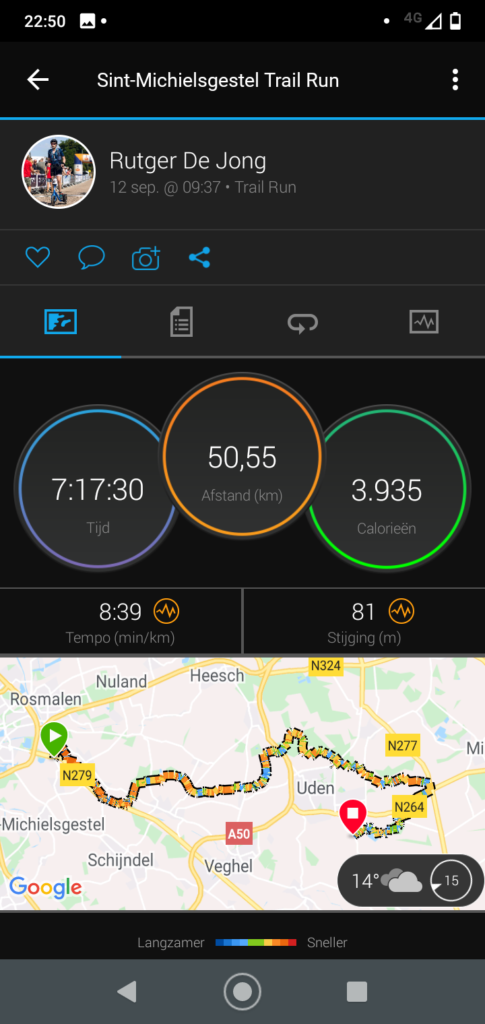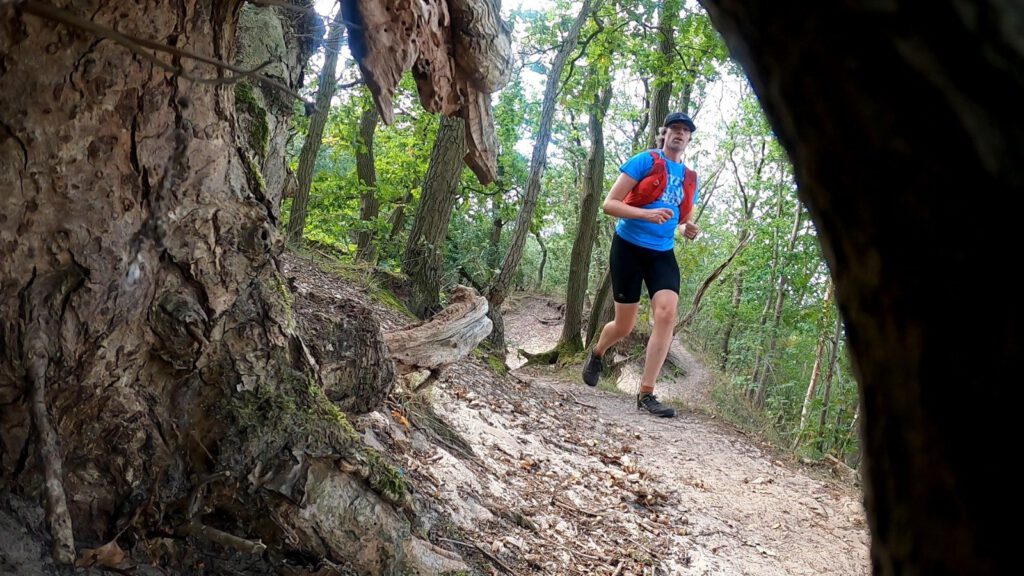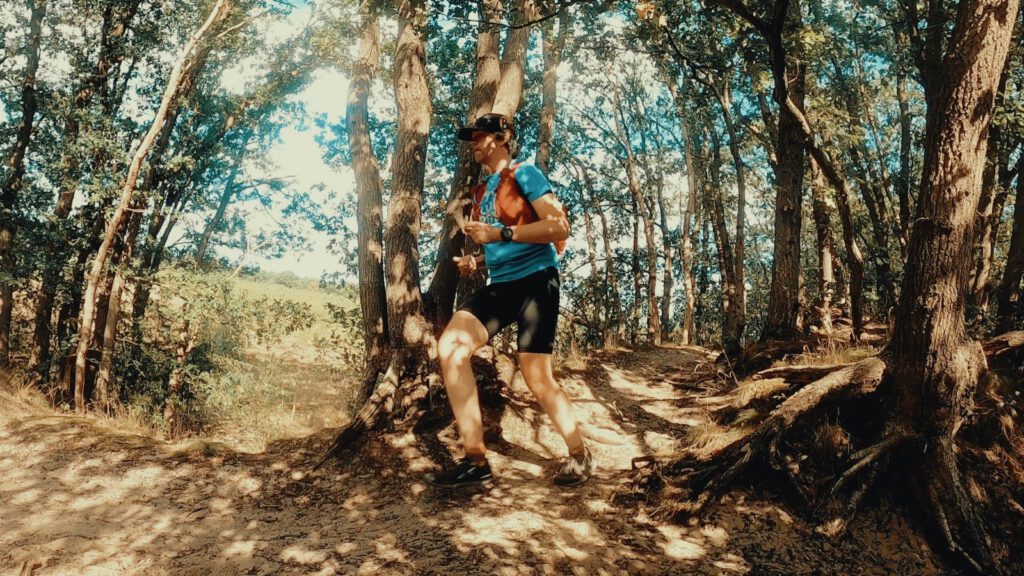
On red water, medieval castles and concrete guardhouses overlooking a footpath: stage five and six of the Hertogenpad. A route of 50 km with unfortunately just too much asphalt for me.
After my outing on the Posbank it was time to move back to running the Hertogenpad. But I honestly admit, as the Indian Summer gets closer, the distance seems to take more toll on me, even though the actual running becomes easier. It sounds rather paradoxical, but see it this way: the body gets stronger, but mentally I am becoming a little tired.
Each year September/October and February/March are very busy months in terms of work. That's when information literacy education often starts, the sessions cost me a lot of time while at the same time other activities continue as usual. This year it all takes a lot more time because of online education. I have to disappoint those who think that teaching online is easier. To keep a lecture with a workshop interesting, you have to redesign most of it for the new situation, taking into account the limitations of the teaching environment. And then there is the stress that this environment doesn't work. To make things a little more exciting, we also decided that we really had to complete a large project in October, for which I actually needed all my time. Thus I ended up with 10-12 hour working days during the whole month of September.
Under these circumstances you can really use the distraction of the long run. But the mental fatigue makes it hard to keep moving and not to give in to the temptations of switching to an easy walk. The run in this blog I did a little earlier in the month, September 12th, on September 23rd I did another one and it was even more difficult to complete (blog will follow later).
Stage five and six
My trip along the Hertogenpad meanders through the blogs. I started with stages one and two, then three and four, then because of the seasons nine to eleven and the Posbank. Now I'm finally back at stage five, which is also called the castles stage. A promising title as before the Hertogenpad I was not aware of the existence of so many Dutch castles. Or better said: I only knew a few big crowd-pullers, including Haarzuilen, and I saw most Dutch castles mainly as strengthened farming houses. Not that those aren't beautiful, I also really like the Groningen borgsI grew up with.
The goal of this day was to run not only stage five, but also stage six. The biggest problem with this plan was the public transport. Odiliapeel, it's a name that belongs more in poems. The lovely mansion of a damsel in distress, in the middle of the rustic peel. Which unfortunately is so rustic that there is only a bus on weekdays. After looking at Wikipedia Odilia turns out not to be a damsel at all, but the patron saint of a church order (the Kruisheren). Before the order founded a church there, the village still had the dull name Terraveen. In this case traveling on Saturday meant a detour of about 6 km to Volkel, which made the route about 50 km in total.
Poeldonk
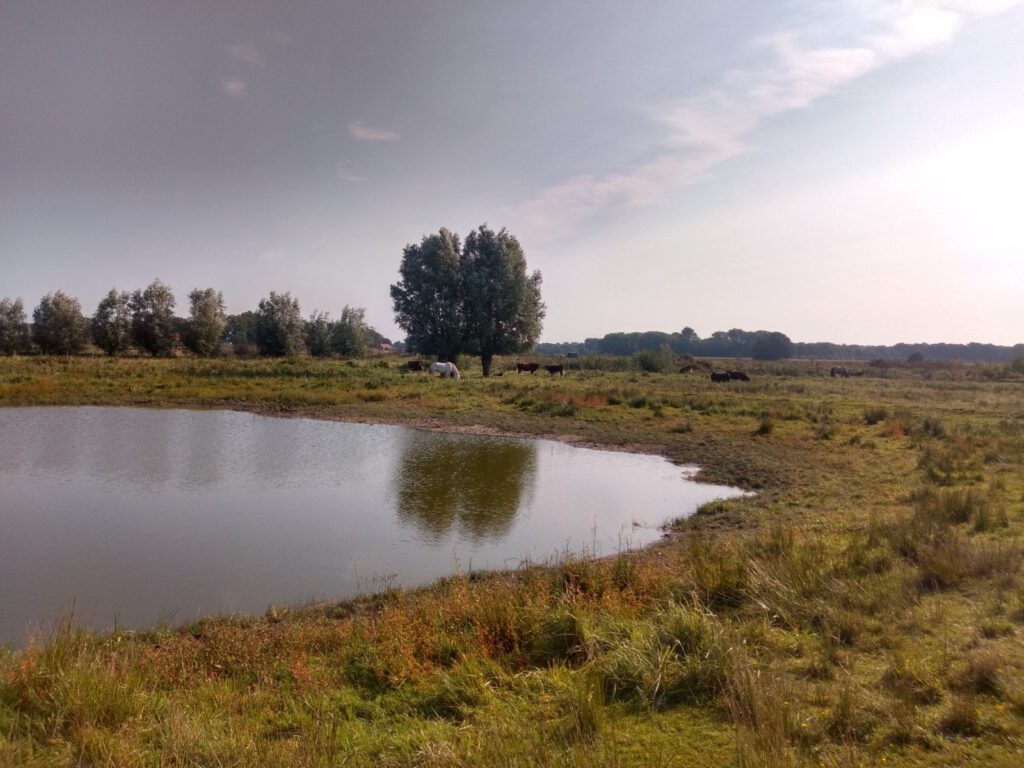
I started the route again where I left it: in Poeldonk. Here no tranport troubles as it is so close to Den Bosch, that a lot of busses pass by. Not in the least because of a busy motorway I have to run along on the cycle path for a long while. Only when I arrived at the local Aa – almost every stream or stream is called this as Aa means running water – I got to a softer underground.
It's still early in the run and I obviously still have to warm up. And pee. But the latter turns out to be tricky, because apparently I ended up in a walking event by accident. At first I only saw a car with some food stuff in front. Soon, however, several groups of runners followed, some of them walking on the same paths as me only in the opposite direction. And sometimes they had just another path that was actually better to walk: more unpaved and closer to the Aa.
Pigeon loft
The first place of interest on my route is the Seldensate estate. It looks like a nice mini castle, but actually it is a gate building with a pigeon tower. Of the house itself only some foundations remain. And funny enough they look rather small. Nice detail: the last squire didn't live in the main building, but in the gardener's house. The canalisation of the Aa then caused further decay and in 1960 the house was demolished.
After Seldensate I continue my way along the Aa. It goes partly through meadows and the route is sometimes difficult to follow. Maybe I tried too hard to find a real path. Earlier on the route I had a path that didn't come close to the gpx. But it really was the only path through the meadows and the Aa didn't change places. In short: there might be some map errors in this area.
Lego box
It was really good autumn weather this day and the paths were well populated. Even while there was no view of groups of hikers anymore, it remained bsuy. At a watchtower I came across the real Burgundian life the Brabanders are so proud of: a couple was having an extensive picnic with a glass of wine.
In the meantime I started to slow down a bit in terms of running pace. I was glad that I could drop it to a walk to admire Heeswijk Castle. Wow, a castle that looks exactly like the medieval castles I made with Lego as a child. Complete with battlements, large donjon and proud little turrets. Sugar-sweet, who would have thought we had castles like that in the Netherlands.
Where these cute castles are usually quite new, there has been a castle in Heeswijk since the eleventh century. And this moated castle is an illustrious one, which didn't just let itself be overrun by the first plundering general. It stood firm in the wars of the Duke of Brabant against Gelre and Flanders. Prince Maurits (17th century), who wanted to conquer it to help in a siege of Den Bosch, also failed to take the castle twice. His brother Frederik Henderik succeeded in 1629. Brabants Erfgoed calling it an ‘architectural patchwork‘ comes as no surprise. The castle has often changed appearances over the years, eventually settling on a romantic 18th century facade.
Concrete and asphalt
After having posed with the other monsters at the castle, I am a bit more cheerful to get into stage six. First I had to cross the Heeswijk forests though, which are indeed not very exciting, as per the official Hertogenpad guide.
The area has suffered some kind of desertification in the past. The drifting dunes of the Dintersche heide threatened the fertile farmland. To counteract this, wooded banks have been constructed in various places, dikes with oaks and great little single tracks going over them.
In the Maashorst nature reserve they aim for just the opposite: let nature take control. Here they want to create a beautiful heather and natural landscape and cut down dull coniferous forests. But first it's time for a cherry flap and some coke on a terrace near the visitor centre.
Rupture lines
I blinked my eyes for a moment as I walked past a stream. Was my blood sugar out of line? No, the water was really red. A result of the Peel fracture, a rupture line in the earth's crust through which strong ferruginous water flows to the surface. And once the water arrives at the surface, the iron ‘rusts’ this water. The special water also causes rare plants like the marsh violet to grow.
Once past the Maashorst, the hard, paved road makes a comeback around Uden. Again a place with a lot of war history. As one of the few places in the Netherlands, there are also monuments to the First World War in which the Netherlands never participated. This is because Uden was a place of shelter for more than 14,000 Belgian refugees.
From the fields
Of more recent times is the airbase Volkel, which is located near Uden. This airbase was built by the Germans in 1940 and is still in use today. On a road with coarse stones I ran with walk breaks around the base. Again tired and somewhat embarrassed not to stand out against the fit soldiers. The many concrete guardhouses, with which the fields in the area could be watched, were fortunately empty.
After the base – and again a long asphalt path – I finally arrived at my own route section. Past the Odiliapeel bus stop. And secretly my own – mostly unpaved – route was actually much nicer than large parts of the real route. For example, after a rather obscure walking route through a farmland – watch out for burrs – I came to the sand extraction in Heikant and recreation lake Hemelrijk. Azure blue water and large machines. Plus a lot of uncertainty about whether or not you were allowed to go there. It makes the terrain a bit more exciting and it invited me to run again.
As I made the last kilometers towards Volkel's yellow mill – with bus stop – I started to wonder: would it be better to improve the LAW route here and there from now on? In many places you can find unpaved roads close to the route. Maybe this will add a few hundred meters or a kilometer on a stage, but for me as a runner that hardly matters. It's a lot nicer to walk unpaved and the studs of my shoes don't wear so much. On this 50 km route there was more than a third asphalt and that percentage should and can really be less.
